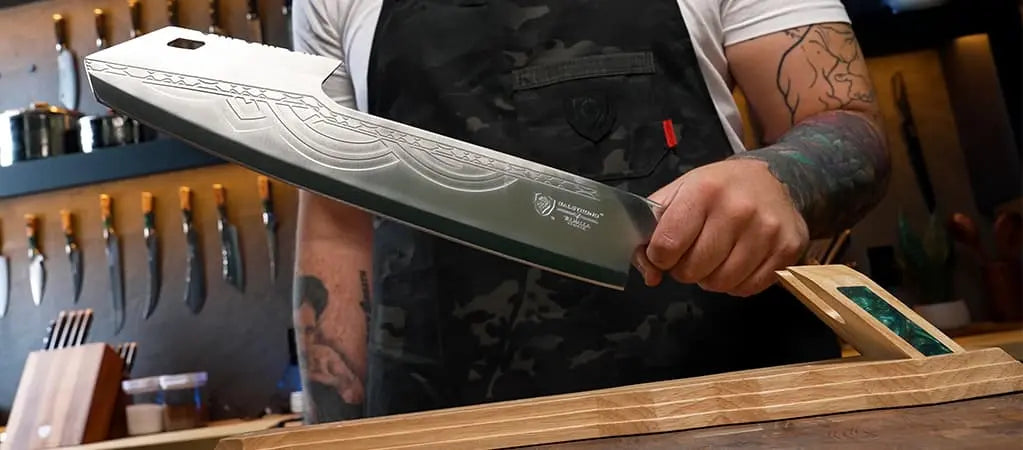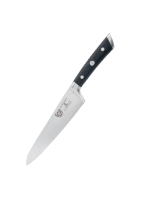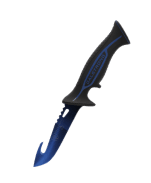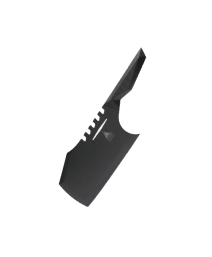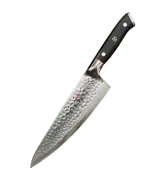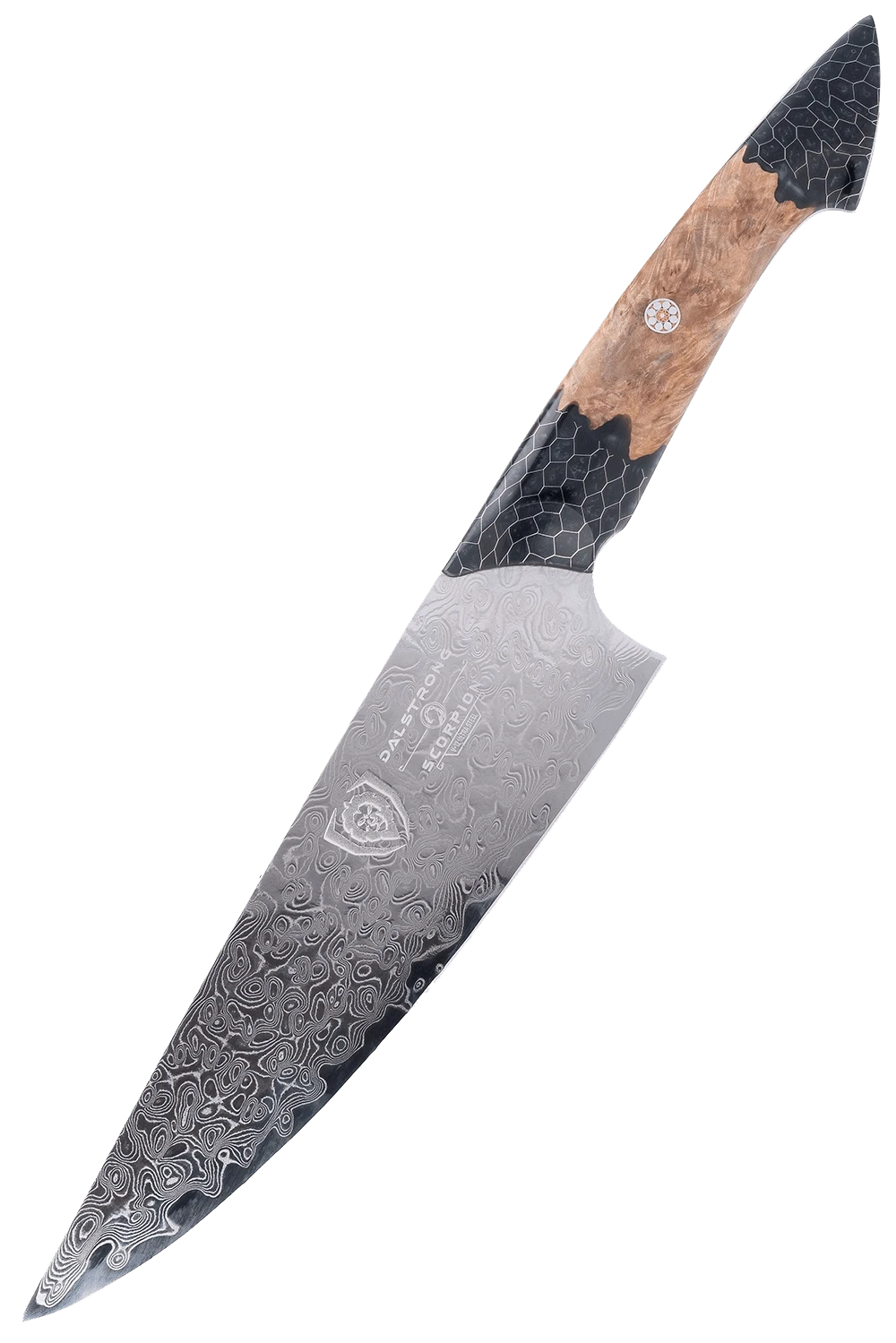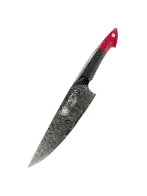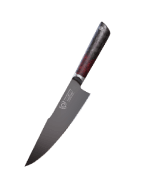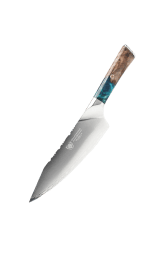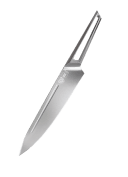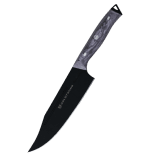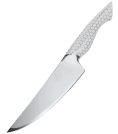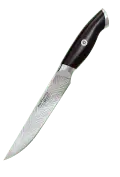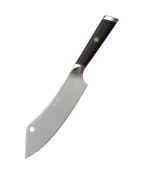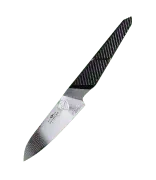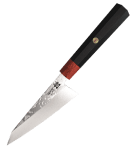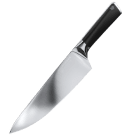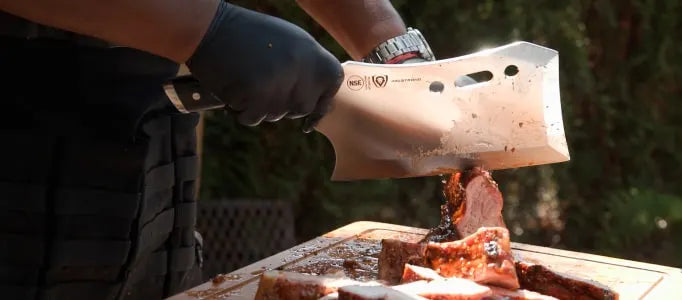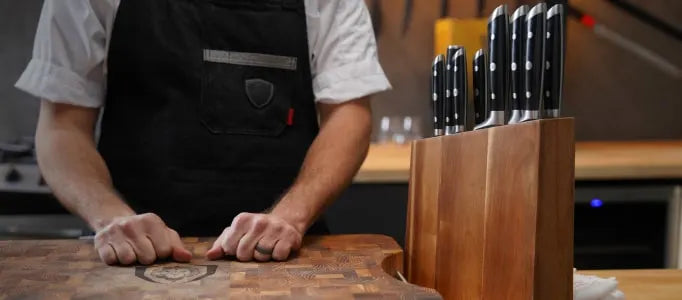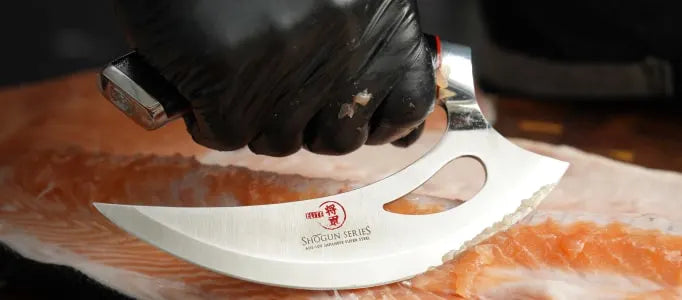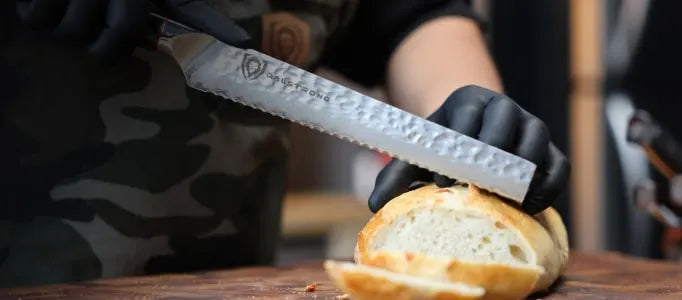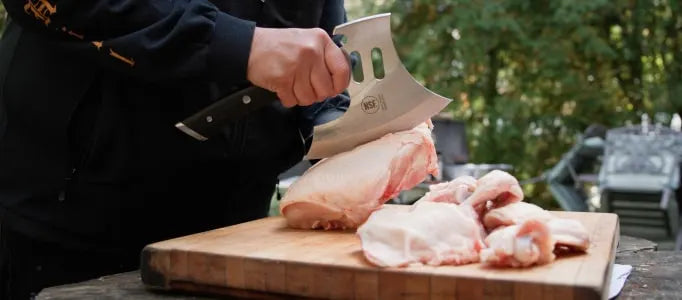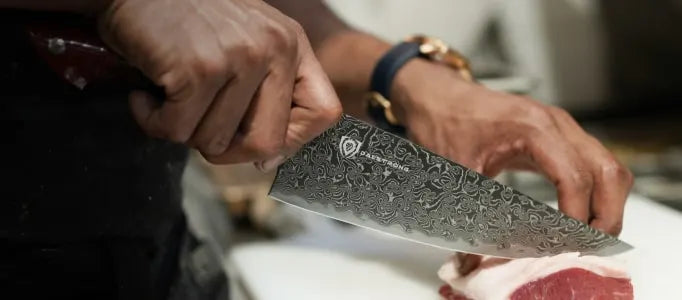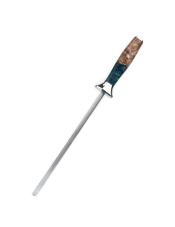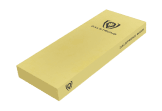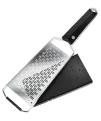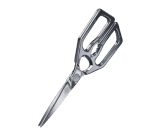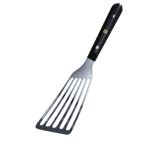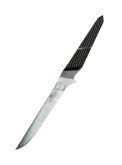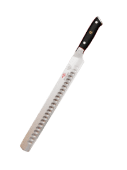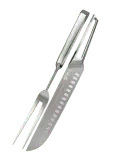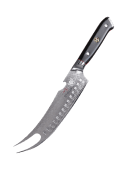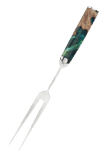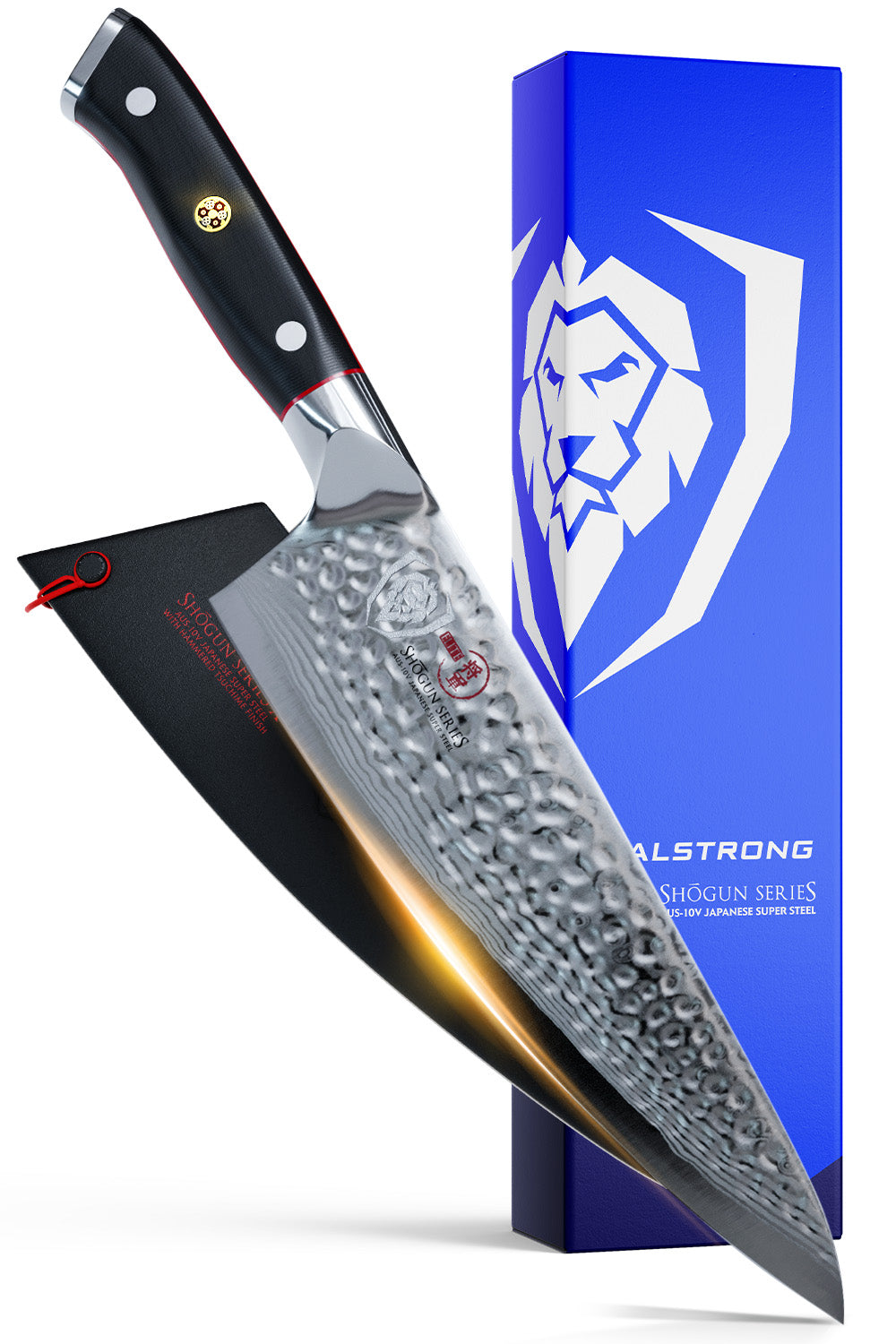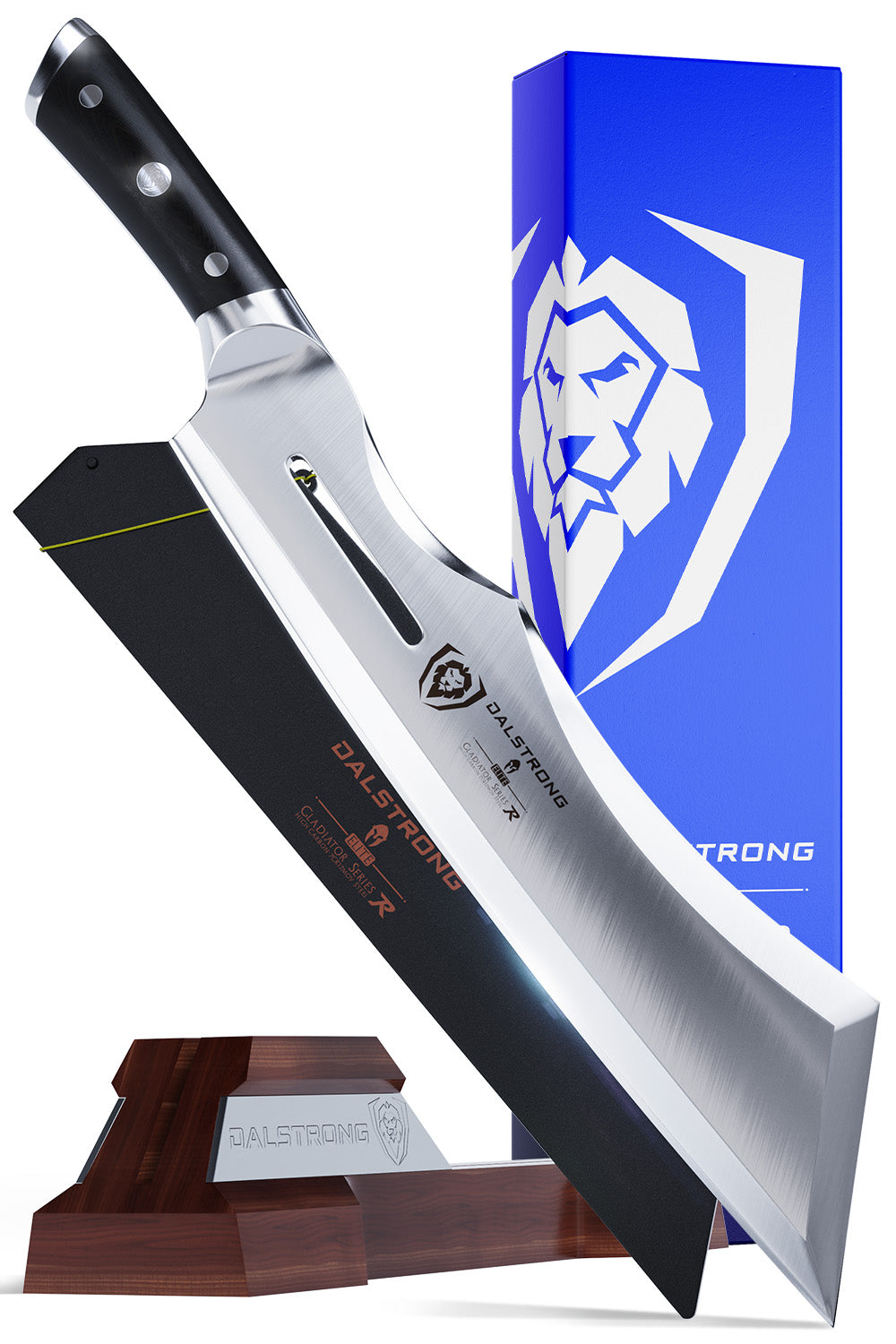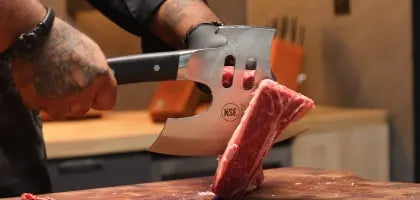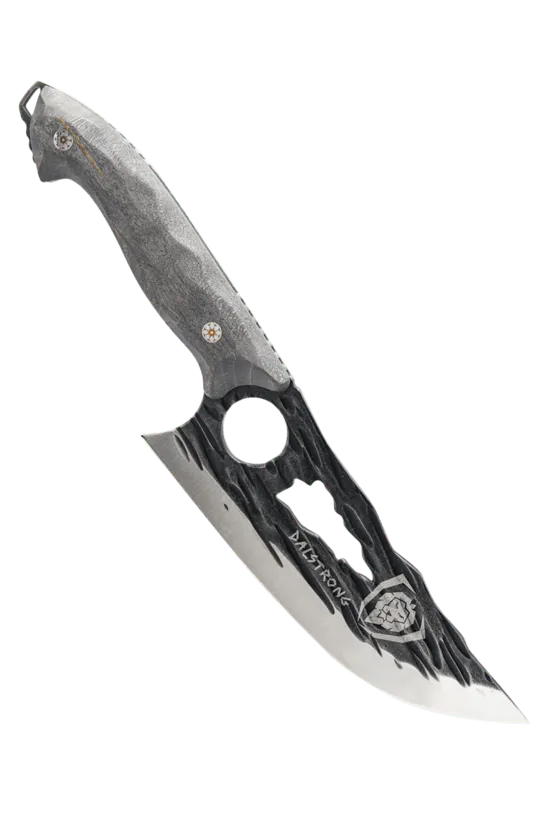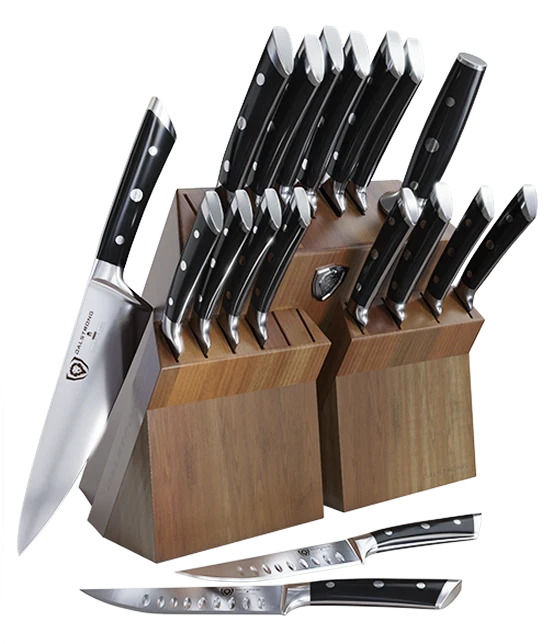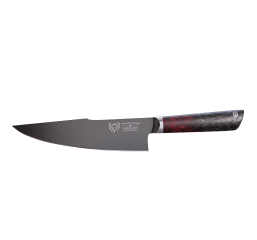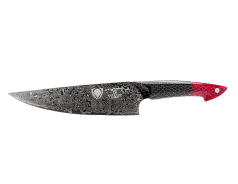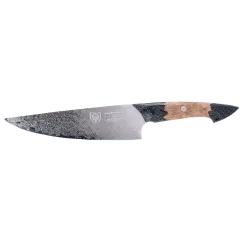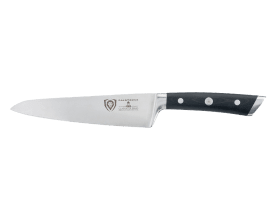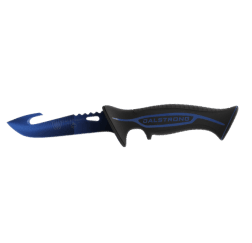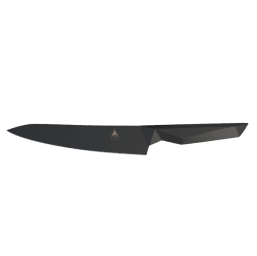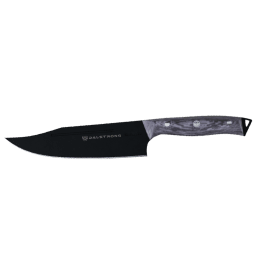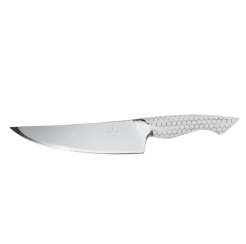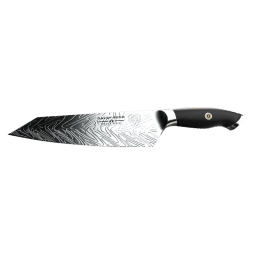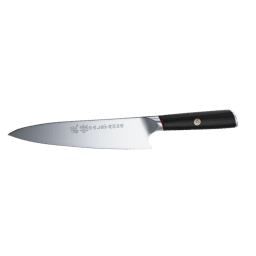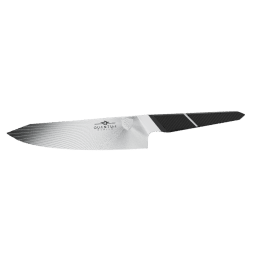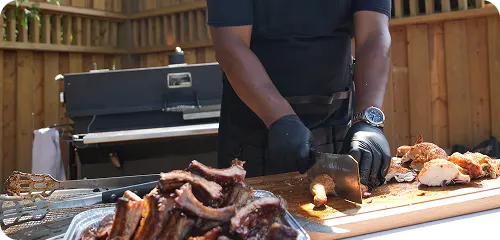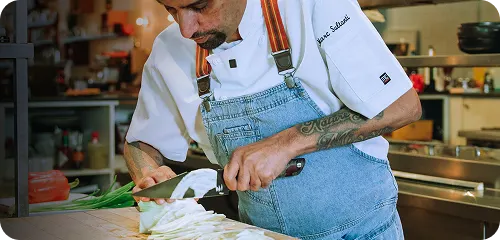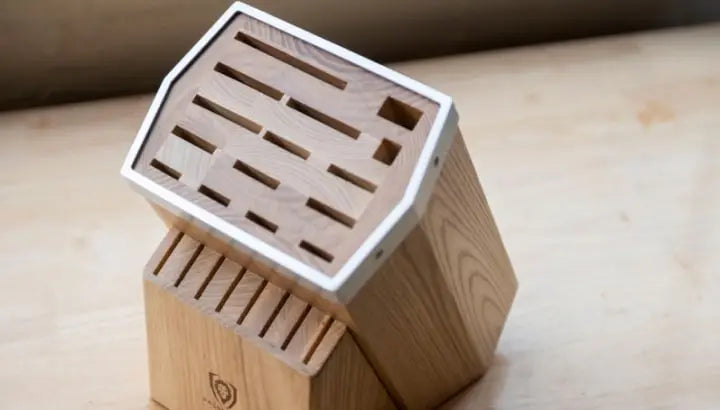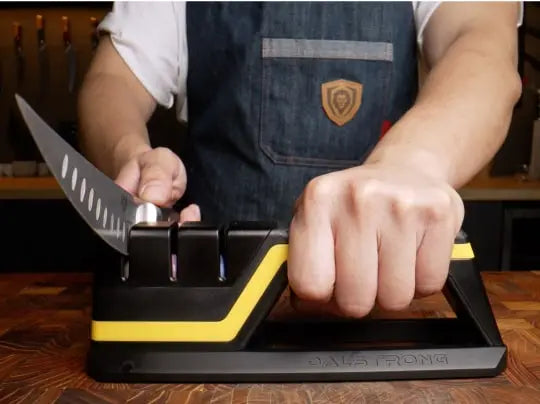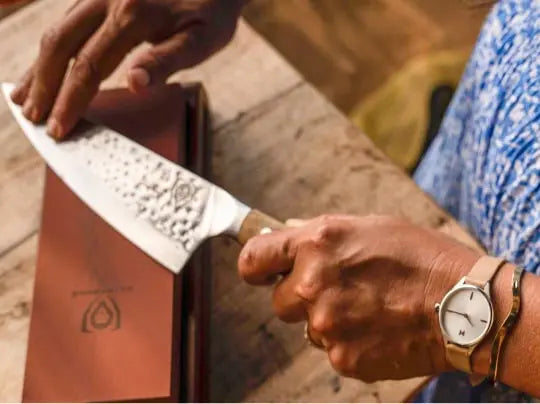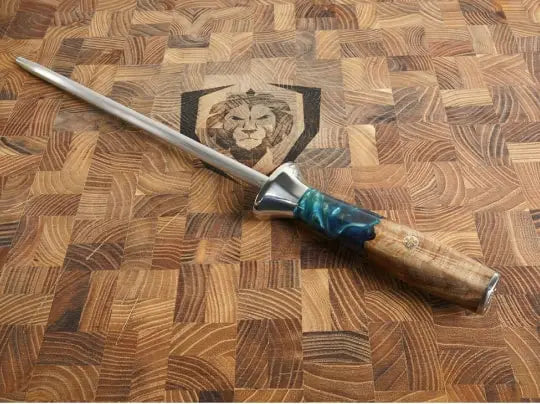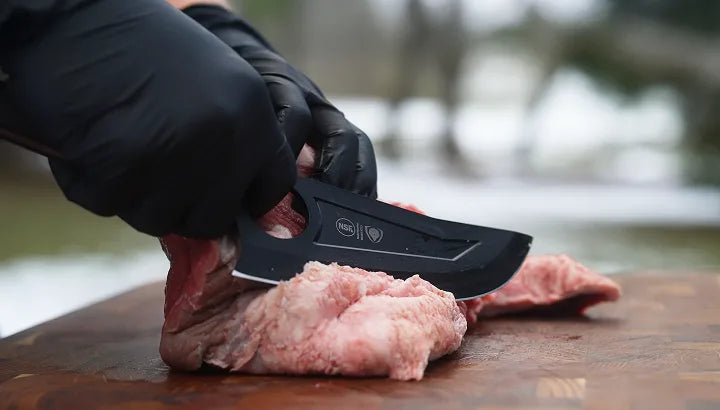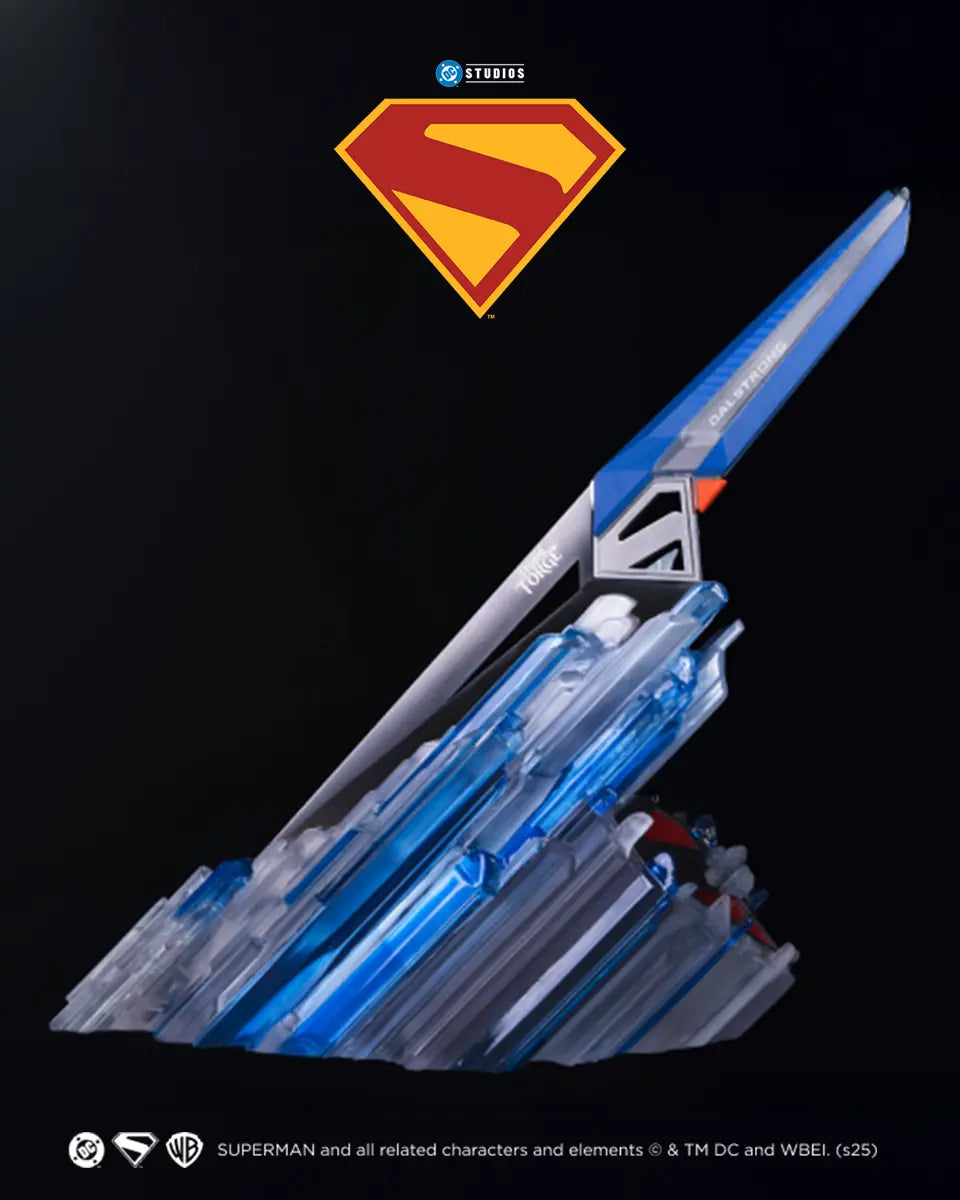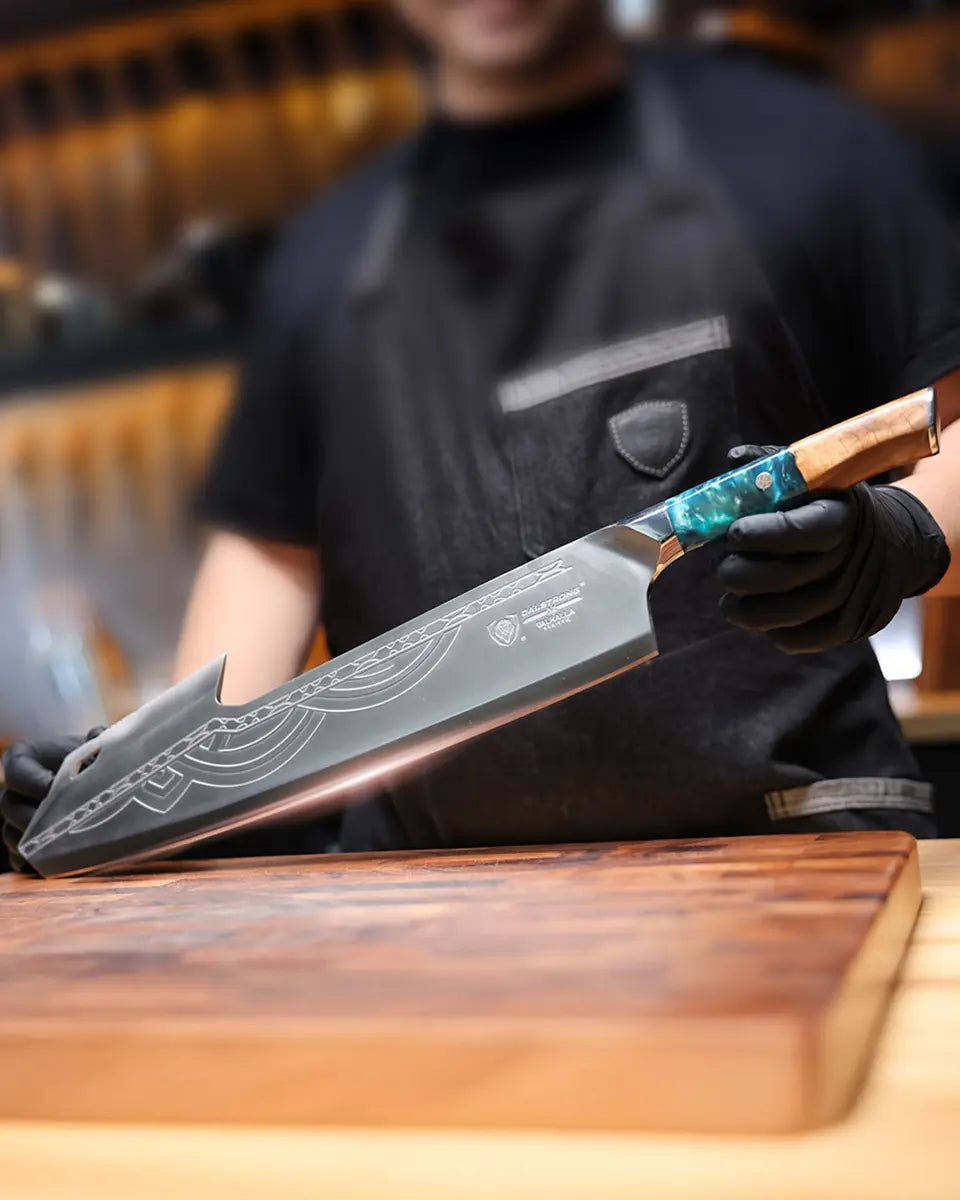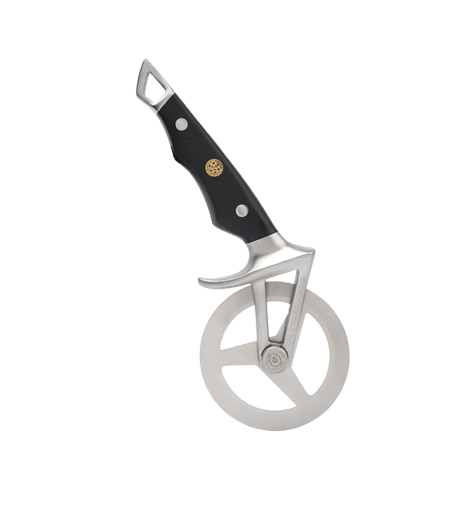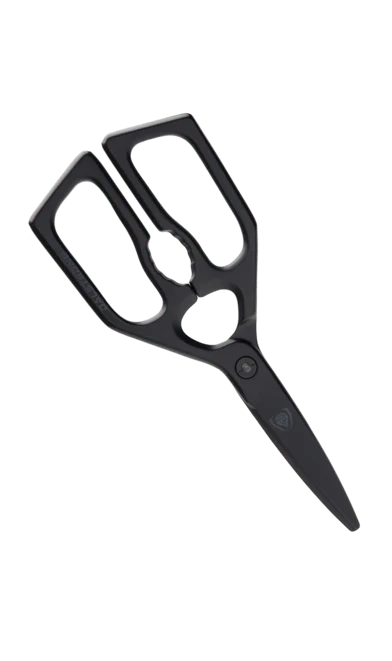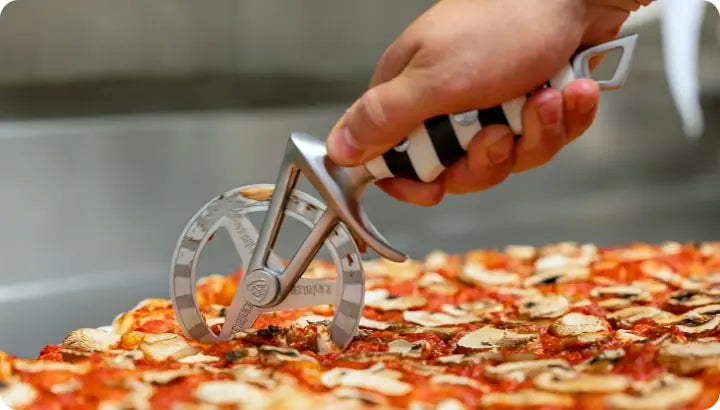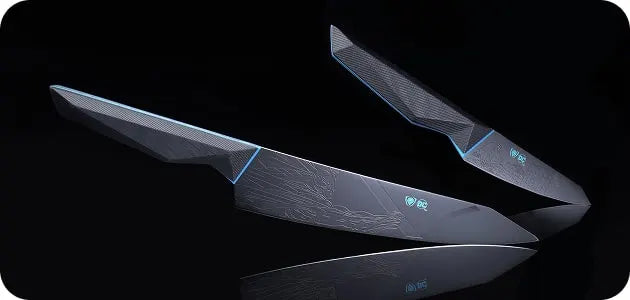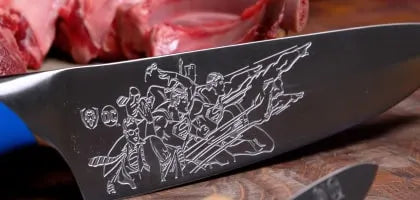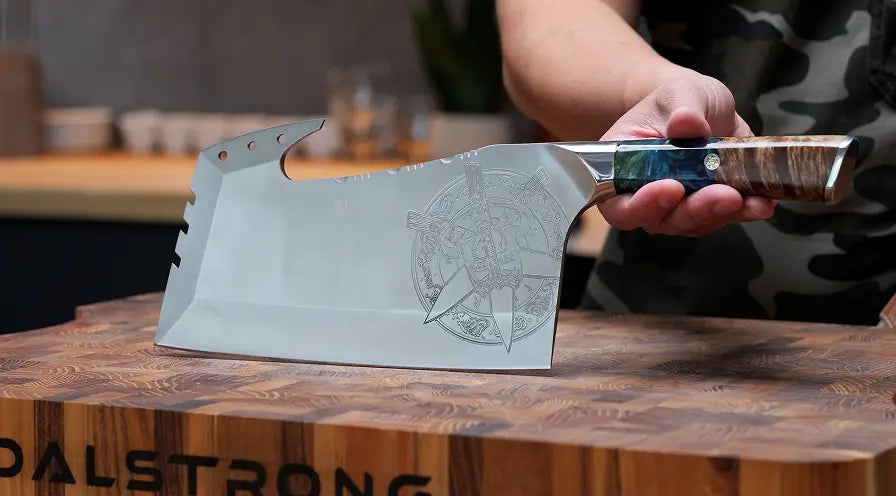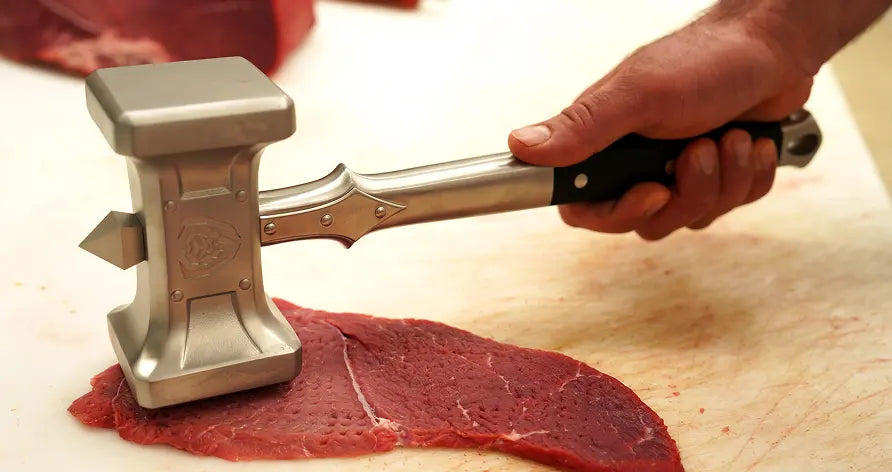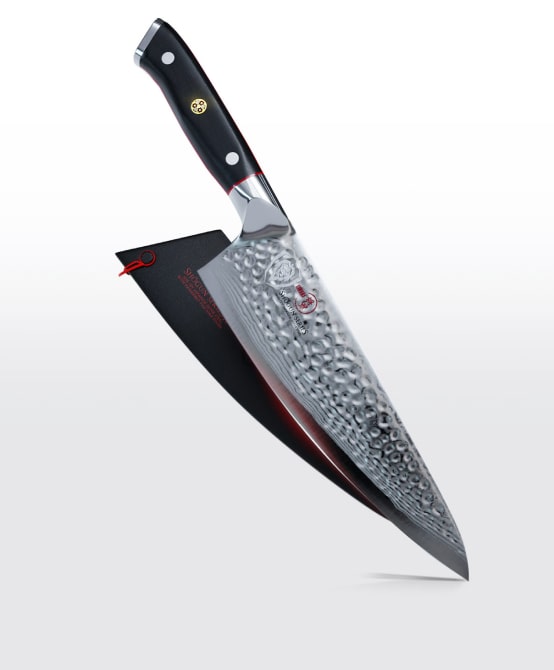 Paring Knife 3.5" Crusader Series NSF Certified Dalstrong
Paring Knife 3.5" Crusader Series NSF Certified DalstrongQuick Overview: How To Peel A Kiwi To Perfection
- Clean your kiwi fruit under running water and pat it dry with a paper towel. This is to ensure that it doesn’t slip on cutting boards.
- If enjoying kiwi with the skin on is not your cup of tea, use a paring knife or vegetable peeler to take it off.
- If you’re moving the skin, make sure you re-wash the fruit under running water.
- Once you’re done washing the fruit, hold it in place on the chopping board.
- Rotate the fruit on the chopping board and cut off the top and bottom.
- Place the fruit upside, so it’s standing with the green flesh exposed to you.
- Move the kiwi once again and cut it either diagonally or into wedges, depending on your preference.
Time to show off your knife skills, folks! In this article, I’ll be walking you through the different ways to cut a kiwi, and how to choose the best type of Kiwi when you’re at the grocery store. And, we will settle the debate – Is eating the skin the right way when it comes to enjoying kiwi?
1. How To Choose A Kiwi
 Chef's Knife 8" Shogun Series ELITE Dalstrong
Chef's Knife 8" Shogun Series ELITE Dalstrong
Who doesn’t love a green kiwi fruit? But before we go into how to cut, peel, and eat kiwis, let’s talk about choosing the right kind of kiwis at the grocery store.
Read about how to tell if a kiwi is ripe and ready to eat, here.
Steps
- Look out for kiwis that are rounder or plump. Oval-sized kiwis are fine too.
- Kiwis have a musky scent to them but they’re not as fragrant as some of the other fruits.
- It’s best to buy kiwis that are slightly unripe and let them ripen on your countertop so you can choose when to use them. Unripe kiwis are firm to the touch and quite hard to cut.
- It is best to buy kiwis that are free of blemishes and any bruises or wrinkles.
- Ripe kiwis can be stored for an impressive 3 weeks, so don’t worry about buying those with a strong smell and texture. Although they are ripe, they are still quite edible.
2. Different Ways To Cut A Kiwi
 Bird's Beak Paring Knife Peeler 3"Crusader Series NSF Certified Dalstrong
Bird's Beak Paring Knife Peeler 3"Crusader Series NSF Certified Dalstrong
There are many different ways to cut kiwis. Here are the different methods of cutting the fruit. You can use a knife or vegetable peeler if you don’t like eating the skin. Sturdy cutting boards, paring knives, chef knives, and vegetable peelers are tools that can help.
Cutting The Kiwi With A Sharp Knife
The best way to carry out this task is by using a sharp knife such as a paring knife or a chef’s knife.
Steps
- Clean the fruit under running water.
- Rotate the fruit and lay the kiwi on the cutting board once you’re done washing the fruit.
- Use a sharp knife and cut off both ends of the fruit. (Like you would with an onion or a tomato).
- Turn the kiwi so it is standing upright with the green flesh facing you.
- Use a vegetable peeler for removing the skin of the fruit unless you prefer eating it with the skin on.
- Rotate the fruit again and start cutting the flesh of the fruit into slices or you can cut the kiwi into wedges.
Cutting The Kiwi (Spoon Method)
The spoon method helps in getting the kiwi out as a whole. This peeling method is generally used to make fruit salads or juice.
Steps
- Clean the fruit under running water and pat it dry.
- Place the fruit and remove a spoon to scoop out the flesh of the fruit by applying pressure on the side of the spoon and start rotating it along its surface.
- Once you’re done pushing the spoon, the flesh of the fruit should be able to pop or slide right out.
- Rotate the fruit and cut the kiwi into wedges depending on your preference.
Cutting The Kiwi (Star Cut)
This is the best way to cut kiwi for toddlers or young children in the house. You can also cut kiwi this way and pack it for their lunch boxes. It is not at all time-consuming and super easy to do.
Steps
- Clean the fruit under some cold running water and then pat it dry.
- Lay the kiwi on the cutting board and hold it in place.
- Hold the fruit and insert the tip of a sharp knife and start making diagonal incisions.
- Continue the second step until you complete a circle cutting the fruit around its rim.
- Remove the knife from the fruit and gently pull apart the slices and they should separate.
3. How To Store Kiwis
 3 Piece Paring Knife SetShogun Series Elite Dalstrong
3 Piece Paring Knife SetShogun Series Elite Dalstrong
The best way to store kiwis is by placing the chopped-up pieces in an airtight container and refrigerating or freezing them. Ripe kiwi fruit can stay in the fridge for five days, whereas they can stay in the freezer for up to 3 months. However, they have to be sealed shut in an airtight container.
When you want to consume the refrigerated or frozen kiwi, simply keep it at room temperature for at least 45 minutes. Just make sure that it isn’t under direct sun exposure. This will cause the kiwi to bruise and develop blemishes. They might even turn overly sour and won’t be edible anymore.
Fun fact, since kiwis, just like bananas, apples, and avocados contain ethylene gas, the unripe kiwi fruits can be stored in a brown paper bag together if you want to quicken the ripening process! You can also keep unripe kiwi fruit in a box of rice and they should ripen soon, too.
The best way to refrigerate the fruit is by placing it in plastic bags, zip-lock bags, or airtight containers.
4. Health Benefits Of Kiwi
 Bird's Beak Peeling & Paring Knife 3" Shogun Series ELITE Dalstrong
Bird's Beak Peeling & Paring Knife 3" Shogun Series ELITE Dalstrong
Kiwi has many health benefits. It contains lots of vitamin C and vitamin E. They’re known to encourage heart health and combat some health conditions and heart diseases.
The kiwi fruit is also known for its anti-inflammatory effects which improved gut health as it’s loaded with antioxidants. Kiwis are also great for individuals that have high blood pressure and heart disease as it helps reduce the risk over the course of time.
The green flesh in this fruit is fantastic for digestive health, too. This is mainly because they’re loaded with fiber and bacteria that support the overall gut health of one’s body. Since kiwis are rich in vitamin C, they make exceptional fruits to prevent diseases like scurvy and other dental problems.
There are a number of ways for enjoying kiwi and introducing them into your diet without it getting monotonous or boring. You can cut kiwi into wedges and mix them with bananas and berries as a fruit salad. They also make excellent contenders for the infamous charcuterie board.
For savory meals, you can make a salad and sprinkle kiwi juice or tiny chunks of kiwi fruit to give it that zest or zing. In fact, you can even blend kiwi and make a healthy salad dressing.
5. Dalstrong Tools You Will Need

This knife from the Frost Fire series is one of Dalstrong’s most popular paring knives. Made with 7 layers of high-carbon 10CR15MOV steel with added cobalt, this knife has a striking appearance with a ruthlessly sharp blade that can cut through the toughest fruits like kiwis and peaches.
PROS:
- The white handle is made with a premium resin material and has a slender, ergonomic grip which makes it tremendously easy to slice and cut foods.
- The blade is sandblasted for its icy and frosted appearance.
- The bolster on the knife is tapered for a comfortable and pinch-like grip.
CONS:
- The style and design of this knife may not be everyone’s cup of tea.
- Some folks prefer using chef knives instead of paring knives.

This serrated paring knife from the Gladiator series is a true and tried knife that is painstakingly hand-sharpened for a robust grip to tackle hard fruits like kiwi. The knuckle clearance makes it easy to make incisions on the fruit for star cuts.
PROS:
- The blade is not only resilient but also one with a striking satin-like finish, making the peeling and cutting experience all that much easier.
- The blade is hardened at 56+ Rockwell making it easy to take on uneven and hard foods without the knife taking on any damage.
- This knife is perfect for home cooks that prefer kitchen tools and knives that are low in maintenance and easy to clean.
CONS:
- The serrations along the blade can add a few additional minutes to the knife sharpening process. But, don’t let that stop you from bagging this phenomenal paring knife from the Gladiator series.
- Are you looking for something more elaborate and stylish in appearance? Check out Dalstrong’s 15+ collections to find your perfect fit.
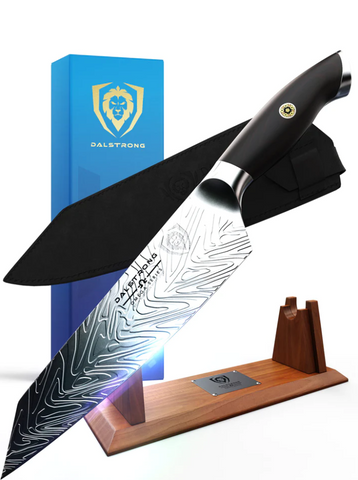
This Kiritsuke chef’s knife from the Omega series is a personal favorite. The blade is made with BD1N American forged hyper steel that offers outstanding finger protection for comfort and safety as you cut the kiwi fruit for fruit salads and dressings.
PROS:
- The blade is hardened at 63+ Rockwell, making it incredibly difficult to damage it.
- The rust and corrosion-resistant cladding of this knife keep your knife durable and clean beyond your imagination.
- It is simply stunning to look at, and ten folds luxurious to hold.
CONS:
- Some folks might get a little intimidated by the design and length of this blade.
- You may prefer working with vegetable peelers or paring knives.

The Phantom series is known for its chef’s knives and this one is no exception to that. Made with premium quality Japanese AUS-9 that is hardened at 58 Rockwell. So, whether it is a kiwi or a melon, this knife will undoubtedly get the job done.
PROS:
- The curved design of the blade makes it easy to make incisions on the skin of the fruit so you can get cuts that are of your preference in terms of size.
- The chromium present in the blade makes it extremely resistant to stain.
- The knife is hand-finished and sharpened at a staggering 13º-15º.
CONS:
- If you’re looking for paring knives or vegetable peelers, this knife might not be the correct fit.
- The blade length could be too short for professional chefs or too long for home cooks that are just stepping into the culinary world.

Made with a G10 Garolite handle, this Y peeler is a versatile kitchen tool that can help in removing the skin from your kiwis if you don’t like eating them. The textured handle offers a fantastic, comfortable grip that will make food prep feel like a breeze.
PROS:
- The space between the 3 blades on this knife help in achieving precise cuts on fruits and vegetables.
- The lock mechanism on this peeler is phenomenal and unheard of. So, if you’re around the elderly or toddlers, this feature will help tremendously when you’re in the kitchen.
- Easily changeable blades.
CONS:
- You may prefer a swivel peeler instead of a Y peeler, so I suggest Dalstrong’s Swivel Straight Peeler.
- You’re someone who is often found enjoying the kiwi skin, so this peeler wouldn’t suit the current purpose to peel the kiwi.
6. Frequently Asked Questions
What is the easiest way to peel a kiwi?
The easiest and fastest way to peel kiwis is with a sharp knife like a paring knife or a chef’s knife. If you enjoy the kiwi fruit without the skin, you can use a vegetable peeler to take the skin off.
Are you supposed to peel the skin of a kiwi?
This is completely up to you. Like the green flesh of this versatile fruit, the skin is edible, too. Eating the skin is perfectly normal.
Should I refrigerate Kiwis?
You can transfer the chopped kiwi pieces in zip lock bags or any airtight container and refrigerate them. It can be eaten within five days of doing so or else it will become sour and leak juice.
Can you peel a kiwi with a potato peeler?
Yes. The peeling method is completely up to you. Removing the skin of the fruit will require a peeler or sharp knife, so it is all about what works for you. You can use a potato peeler, a swivel peeler, or a Y peeler.



